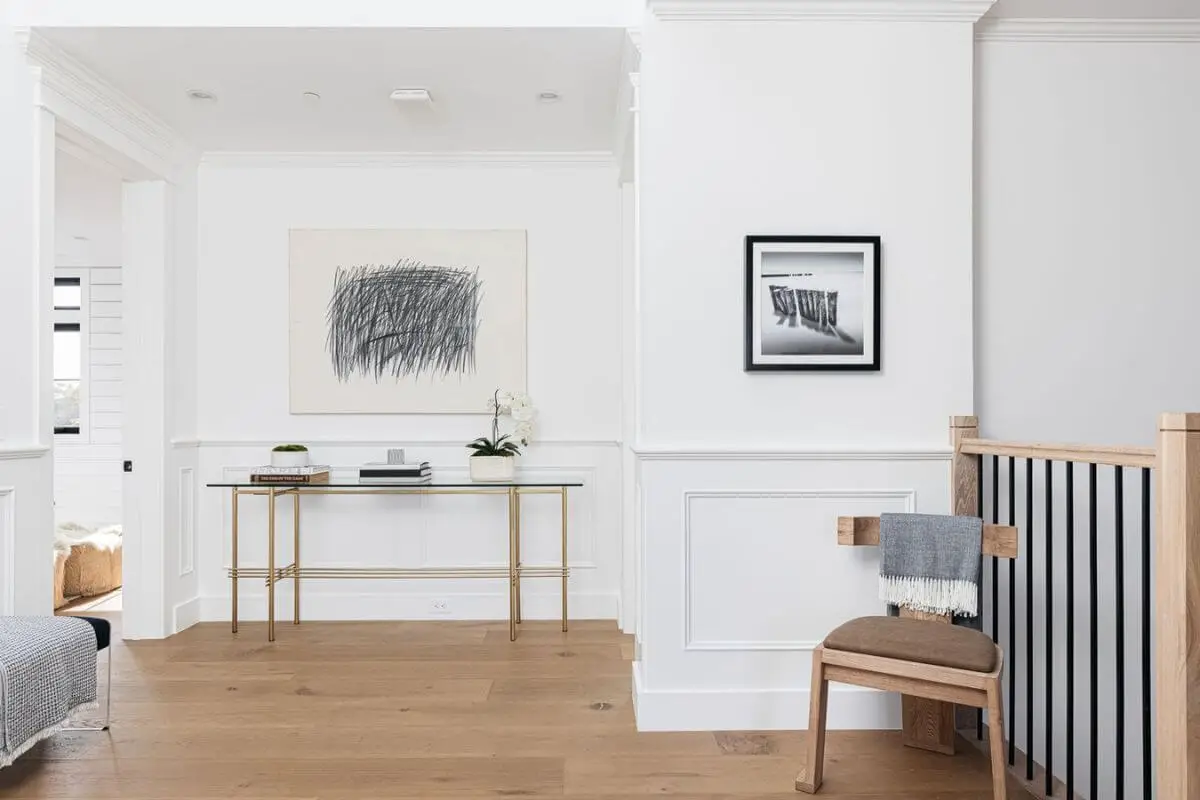Introduction
When it comes to home interior design, every detail matters, and choosing the right trim can significantly impact the overall aesthetic and feel of your living space. Two popular options that homeowners often debate over are white trim and wood trim. Each has its unique charm, benefits, and considerations. In this article, we’ll delve into the differences between white trim and wood trim, helping you make an informed decision that suits your style and preferences.
Understanding Trim and Its Importance
Trim is the decorative finishing material used to frame doors, windows, ceilings, and baseboards in a home. Its primary purpose is to conceal gaps and add a touch of elegance to the interior. The right trim selection can elevate the look of any room, creating a polished and cohesive atmosphere.
The Classic Elegance of White Trim
Advantages of White Trim
White trim has stood the test of time and remains a popular choice for many homeowners. Its advantages include:
- Versatility: White trim blends effortlessly with any color scheme and interior design style.
- Brightening Effect: White trim reflects light, making spaces feel more open and spacious.
- Timelessness: The classic appeal of white trim ensures it never goes out of style.
- Easy Maintenance: Any scuffs or imperfections can be easily touched up with paint.
Considerations for White Trim
- Prone to Stains: White trim can show dirt and stains more prominently than wood trim.
- Susceptible to Chipping: Over time, white-painted trim may show signs of wear with chipping or peeling.
The Warmth and Character of Wood Trim
Advantages of Wood Trim
Wood trim brings a natural warmth and character to your home with the following benefits:
- Rich Aesthetics: The grain patterns and natural colors of wood add depth and sophistication.
- Durability: High-quality wood trim can last for generations with proper care.
- Customization: Wood trim can be stained or painted in various shades to match your interior.
- Hypoallergenic: Ideal for those sensitive to allergens, as it does not trap dust or pet dander.
Considerations for Wood Trim
- Higher Cost: Wood trim can be more expensive compared to white trim materials.
- Prone to Scratches: Some wood types may be susceptible to scratches and marks.

Finding Harmony with Your Interior Design
To achieve a harmonious interior, consider the following factors:
Blending with Wall Colors
Select a trim color that complements your wall colors. White trim offers a crisp contrast, while wood trim adds warmth and can enhance earthy tones.
Complementing Flooring Choices
The type and color of your flooring should be considered. White trim pairs well with darker floors, while wood trim can complement lighter flooring.
Furniture and Decor Coordination
Ensure your trim choice harmonizes with your furniture and decor. White trim creates a clean backdrop for various styles, while wood trim complements rustic or traditional decor.
Durability and Maintenance
The longevity and ease of maintenance are important aspects to consider:
- White Trim: Requires periodic touch-ups to maintain its pristine appearance.
- Wood Trim: Properly cared for, wood trim can withstand the test of time.
Cost Comparison: White Trim vs. Wood Trim
When it comes to cost, white trim is generally more budget-friendly, making it an attractive option for those on a tight budget. Wood trim, while more expensive, offers long-term value and beauty.
Environmental Considerations
For eco-conscious homeowners, wood trim from sustainably managed forests can be a greener option compared to synthetic materials used in white trim.
Resale Value Implications
The choice of trim can impact the resale value of your home. Both white and wood trim have their appeal, but timeless white trim may be preferred by potential buyers.
DIY vs. Professional Installation
While installing white trim is relatively straightforward, wood trim might require professional expertise for a flawless finish.
Personal Preference and Lifestyle
Ultimately, your personal taste and lifestyle should guide your decision. Consider how each option aligns with your vision for your living space.
Addressing Common Misconceptions
Debunking misconceptions about white trim and wood trim can help you make an informed choice.
White Trim with Wood Accents: The Best of Both Worlds
Can’t decide? Combining white trim with wood accents can strike a balance between classic elegance and natural warmth.
Case Studies: Real-Life Examples
Learn from real-life examples of homeowners who successfully incorporated white and wood trim into their interiors.
Top Trends in Trim Design
Stay up-to-date with the latest trends in trim design for inspiration.
Conclusion
Choosing between white trim and wood trim involves considering various factors, from aesthetics to maintenance and environmental impact. Both options have their unique advantages, so it ultimately comes down to your personal preferences and how they align with your interior design vision. Whether you opt for the classic elegance of white trim or the warmth of wood trim, investing in high-quality materials and professional installation can elevate the look and feel of your home.
FAQs
Q: Can I mix white trim with wood trim in the same room?
A: Yes, combining white trim with wood accents can create a stylish and balanced look.
Q: Is wood trim eco-friendly?
A: Yes, wood trim from sustainably managed forests is a greener option compared to synthetic materials.
Q: How often should I repaint white trim?
A: The frequency of repainting depends on factors like wear and tear, but every few years is typical.
Q: Does wood trim require special maintenance?
A: Wood trim should be periodically cleaned and may require re-staining every few years.
Q: Can I install wood trim myself?
A: While DIY installation is possible, professional expertise can ensure a flawless finish.



